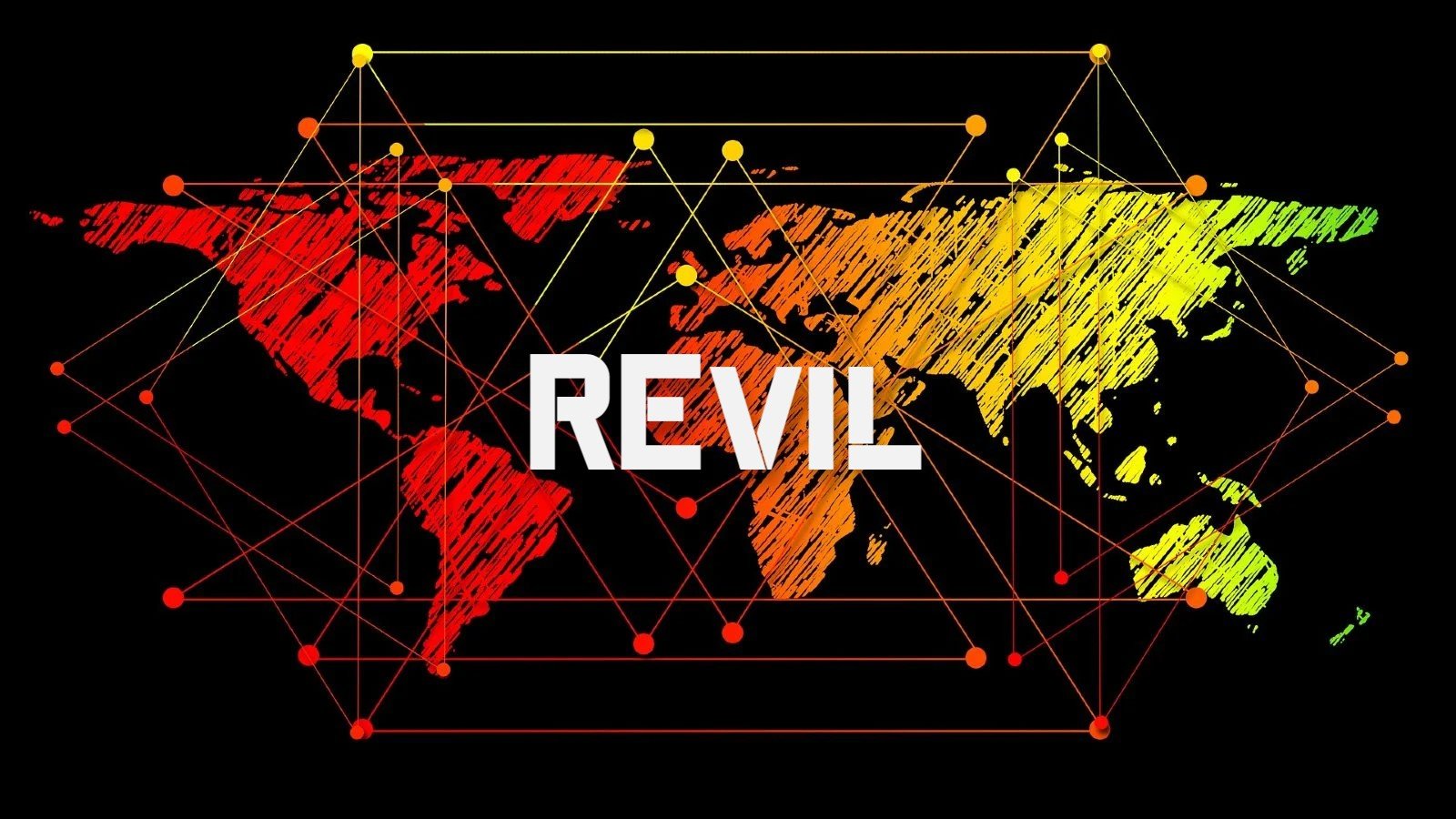
Sha’Carri Richardson, a star sprinter who’d secured herself a spot on Team USA and was set to go to the Tokyo Olympics, may not be able to compete after a drug test for cannabis came back positive.
Last month at the Olympic Trials, Sha’Carri Richardson’s run was the talk of the internet. The 21-year-old ran the 100-meter dash in just 10.86 seconds. People said she “looked like a meteor” running down the track, thanks in part to her fire-orange hair. She later told media outlets that her girlfriend helped choose the color “to show the world I’m a force to be reckoned with.”
On Friday morning, the United States Anti-Doping Agency announced that Richardson had tested positive for cannabis, and had accepted a one-month suspension. Weed is legal in Oregon, where Richardson was competing at the time, but it’s banned for Olympic athletes.
During an interview with The Today Show’s Savannah Guthrie, Richardson said she’d used the substance after finding out about the unexpected death of her biological mother during the Olympic trials in Oregon. The news was revealed to her by a reporter during an interview. “It sent me into a state of emotional panic,” she said. “I didn’t know how to control my emotions or deal with my emotions during that time.”
She started the interview by saying, “I take responsibility for my actions. I know what I did, I know what I’m supposed to do and I’m allowed not to do, and I still made that decision. I’m not looking for an excuse… I apologize.”
A day before her positive test was announced, she had tweeted, “I am human.”
The U.S. Anti-Doping Agency noted that Richardson’s one-month suspension began June 28. The Olympic Games start on July 23 this year, but the suspension may be over in time for Richardson to run the 4×100 meter relay, which takes place in the latter half of the Games, if she’s still put on Team USA. It seems unlikely, however, that Richardson will be able to compete in the individual 100-meter race in Tokyo; a New York Times report said U.S.A. Track & Field had contacted other women who’d competed in the 100-meter race at the trials to let them know they’d moved up a spot in the standings.
USATF called the situation “incredibly unfortunate and devastating for everyone involved.” Read their full statement here:
Folks on Twitter were quick to come to Richardson’s defense, noting that weed is very different than steroids and doping. Many drew comparisons between her case and Michael Phelps’s. In 2009, a photograph of the decorated swimmer surfaced that showed him inhaling from a weed pipe, and he was disciplined. He never tested positive for the substance, but he did lose sponsorship deals and was suspended from U.S.A. Swimming for three months with pulled financial support, Newsweek reports.
“Cannabis prohibition is a human rights issue that we need to address,” says Dasheeda Dawson, a molecular biologist and Cannabis Program Supervisor for the City of Portland, OR. “Cannabis prohibition destroyed communities for decades and has caused countless athletes to lose promising careers simply because we choose to accept the lies perpetuated by the War on Drugs. In the state of Oregon, where the trials are taking place, cannabis is legal for both medical and adult-use. And, as the wave of legalization hits globally and billions of dollars generated from conscious cannabis consumption, I wonder what the US Olympic Committee will say to all of the world-class athletes, like Sha’Carri, that [are] harmed out of sheer ignorance. Hopefully, it’s more than just a paltry apology.”
Dawson adds that the ban on weed in the sport may be tied to officials “lacking cannabis competency and true understanding about the science of cannabis,” adding that cannabis is often used medicinally for joint and muscle recovery after training.
All eyes will be on USATF and Richardson as the decision is made as to whether she’ll be able to make the relay race. In the meantime, we hope the world will treat Richardson with some compassion after her loss.
Molly Longman
Richardson will miss Olympic 100 after marijuana test
By EDDIE PELLS and PAT GRAHAM

In this June 19, 2021 photo, Sha'Carri Richardson celebrates after winning the first heat of the semis finals in women's 100-meter runat the U.S. Olympic Track and Field Trials in Eugene, Ore. Richardson cannot run in the Olympic 100-meter race after testing positive for a chemical found in marijuana. Richardson, who won the 100 at Olympic trials in 10.86 seconds on June 19, told of her ban Friday, July 2 on the “Today Show.”(AP Photo/Ashley Landis)
American champion Sha’Carri Richardson cannot run in the Olympic 100-meter race after testing positive for a chemical found in marijuana.
Richardson, who won the 100 at Olympic trials in 10.86 seconds on June 19, spoke of her ban Friday on the “Today” show. She tested positive at the Olympic trials and so her result is erased. Fourth-place finisher Jenna Prandini is expected to get Richardson’s spot in the 100.
Richardson accepted a 30-day suspension that ends July 27, which would be in time to run in the women’s relays. USA Track and Field has not disclosed plans for the relay.
The 21-year-old sprinter was expected to face Jamaica’s Shelly-Ann Fraser-Pryce in one of the most highly anticipated races of the Olympic track meet.
On Thursday, as reports swirled about her possible marijuana use, Richardson put out a tweet that said, simply: “I am human.” On Friday, she went on TV and said she smoked marijuana as a way of coping with her mother’s recent death.
“I was definitely triggered and blinded by emotions, blinded by badness, and hurting, and hiding hurt,” she told NBC. “I know I can’t hide myself, so in some type of way, I was trying to hide my pain.”
Richardson had what could have been a three-month sanction reduced to one month because she participated in a counseling program.
After the London Olympics, international regulators relaxed the threshold for what constitutes a positive test for marijuana from 15 nanograms per milliliter to 150 ng/m. They explained the new threshold was an attempt to ensure that in-competition use is detected and not use during the days and weeks before competition.
Though there have been wide-ranging debates about whether marijuana should be considered a performance-enhancing drug, the U.S. Anti-Doping Agency makes clear on its website that “all synthetic and naturally occurring cannabinoids are prohibited in-competition, except for cannabidiol (CBD),” a byproduct that is being explored for possible medical benefits.
While not weighing in on her prospects for the relays, USATF issued a statement that said her “situation is incredibly unfortunate and devastating for everyone involved.” The U.S. Olympic and Paralympic Committee said it was “working with USATF to determine the appropriate next steps.”
Richardson said if she’s allowed to run in the relay, “I’m grateful, but if not, I’m just going to focus on myself.”
Her case is the latest in a number of doping-related embarrassments for U.S. track team. Among those banned for the Olympics are the reigning world champion at 100 meters, Christian Coleman, who is serving a suspension for missing tests, and the American record holder at 1,500 and 5,000 meters, Shelby Houlihan, who tested positive for a performance enhancer she blamed on tainted meat in a burrito. Also on Friday, defending Olympic 100-meter hurdles champion Brianna McNeal had a five-year ban for tampering or attempted tampering with the doping-control process upheld by the Court of Arbitration for Sport.
Now, Richardson is out as well, denying the Olympics of a much-hyped race and an electric personality. She ran at the trials with flowing orange hair and long fingernails.
“To put on a face and go out in front of the world and hide my pain, who am I to tell you how to cope when you’re dealing with pain and struggles you’ve never had to experience before?” Richardson said.
___
More AP Olympics coverage: https://apnews.com/hub/2020-tokyo-olympics
US track star Sha’Carri Richardson gets one month suspension for positive marijuana test
BY JORDAN ROBLEDO

US track and field star and Olympic qualifier Sha’Carri Richardson has been disqualified from the upcoming games.
The news comes after Richardson failed a drug test – which found marijuana in her system.
During an interview on the Today show, the 21-year-old apologized for her actions and opened up about the recent death of her mother.
“I want to take responsibility for my actions. I know what I did,” she said. “I know what I’m supposed to do, [what] I’m allowed not to do and I still made that decision, but not making an excuse or looking for empathy in my case.”
Due to her test result, she is now on a one-month suspension.
Richardson goes on to explain the events leading up to her marijuana use and revealed that she found out her mother died by a reporter.
“I had an interview scheduled with my agent… I was just thinking ‘Oh it’s going to be a normal interview,'” she explained.
“But then on the interview to hear that information come from a complete stranger it was definitely nerve shocking. It’s just like how are you to tell me that?
“No offence to him at all, he was just doing his job but it definitely sent me into a state of mind and in a state of emotional panic.”
A few days after finding out her mother died, Richardson went on to qualify for the Olympics with her record-breaking win in the women’s 100-meter dash.
Before the news hit headlines on Friday (2 July), the young athlete seemingly referred to the situation in a cryptic tweet on 1 July, stating: “I am human.”
In the interview, Richardson referred to the tweet to reiterate that she’s human and makes mistakes.
“Like I tweeted yesterday, I’m human. We are human, I want to be as transparent as possible with you guys whether it’s good, whether it’s bad,” she said.
The Chief executive officer of the US Anti Doping Agency, Travis T Tygart, opened up about the news in a statement.
“The rules are clear, but this is heartbreaking on many levels; hopefully, her acceptance of responsibility and apology will be an important example to us all that we can successfully overcome our regrettable decisions,” he said.
The USADA organization also revealed that Richardson’s wins and record-breaking results have been disqualified and any prizes, medals and points have been forfeited.
Since the news fans, athletes and celebrities have spoken out against the decision to disqualify the young talent.
Athletic brand Nike and sponsor for Richardson released a statement sticking by the Olympic hopeful.
“We appreciate Sha’Carri’s honest and accountability and will continue to support her through this time,” they said.
Gabrielle Union took to Twitter and wrote: “Weed is great for many a thing but running faster isn’t one of them. LET HER RUN!!!”
Basketball star Dwayne Wade also showed support for the Richardson, stating: “Majority of y’all rule-makers smoke and probably are investors in THC companies. Let’s stop playing these games.”
By Mary Kay Linge
NY POST
July 3, 2021 || Updated

President Joe Biden applauded Sha'Carri Richardson's response to her marijuana suspension from the Olympic team.REUTERS/Kevin Lamarque
NBA star speaks out in support of suspended Sha’Carri Richardson
‘Let Sha’Carri Run!’: Fans petition for sprinter to rejoin Olympic team
AOC blasts IOC for suspending Olympian over marijuana test
Olympian’s weed suspension leads to Michael Phelps comparison
President Joe Biden said Saturday he is “proud” of sprinter Sha’Carri Richardson — but doesn’t think she should be reinstated to the US Olympic track team after being bounced for pot use.
“Well, the rules are the rules,” Biden told reporters Saturday as he shopped at a farm stand in Central Lake, Mich. “But I was really proud of the way she responded.”
Richardson, 21, won the 100-meter dash in 10.86 seconds at the U.S. Olympic trials on June 19 — but later tested positive for THC, the chemical in marijuana.
The test results meant a 30-day suspension from competition. Weed is considered a banned substance by the World Anti-Doping Agency (WADA) and USA Track and Field.
“I want to take responsibility for my actions,” Richardson told NBC News Friday. “I’m not looking for an excuse.”
Biden’s reaction to Richardson’s punishment puts him at odds with many of his fellow Democrats — including far left Rep. Alexandria Ocasio-Cortez (D-NY), who blasted the International Olympic Committee’s anti-weed stance as “an instrument of racist and colonial policy” and demanded Richardson’s return to the team.
Biden’s comment came one day after Republican Rep. Matt Gaetz of Florida attacked the president for his silence on the Richardson matter.
“The press who love to bathe in the intersectionality of race-gender-sports should ask @JoeBiden if he believes Sha’carri Richardson should be barred from representing America for using a drug legal in most states that doesn’t impact performance,” Gaetz tweeted Friday.
“I sure as hell don’t.”



 PowerShell command to execute the REvil ransomware
PowerShell command to execute the REvil ransomware



